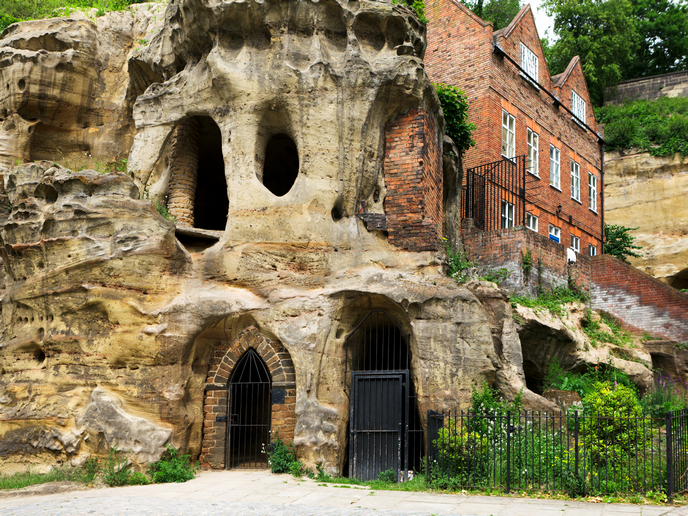New exhibition celebrates the caves hidden beneath the city of Nottingham
As fascinating as the underground world is, approaches are lacking to sufficiently understand it, its current use and conservation, and its future. The academic community argues that an interdisciplinary approach to the underground is needed to address these important research issues. Funded by the European Research Council, the THINK DEEP project will develop this approach by integrating creative practices such as visual art and participatory theatre with arts and humanities theories.
City of caves
As of 24 September, the artistic and educational charity Nottingham Contemporary in the United Kingdom (UK) is presenting the thematic exhibition ‘Hollow Earth: Art, Caves and The Subterranean Imaginary’. It “brings together a wide range of responses to the image and idea of the cave,” states a news item posted on the Nottingham Contemporary website. This major exhibition includes paintings, photography, sculptures, sound, installations, videos, archives and architectural models. They span seven decades, from 1960 to today, together with works from the 1700s and 1800s. Nottingham is home to the UK’s largest network of caves. There are more than 800 caves hand carved into the sandstone bedrock deep below. “For centuries, they have played host to dwellings, mines, cellars and tanneries. Inspired by this subterranean city, Hollow Earth brings together 150 works by more than 50 artists to explore questions of thresholds, darkness and prehistory. Every culture and religion has told stories about what lies beneath. Caves are where extraordinary events come to pass, the domain of gods and monsters, of births, burial and rebirth. Dark, dangerous and unstable, caves are places of visions and experiences both sacred and profane. More recently, they have become home to data farms, seed vaults and doomsday bunkers.”
Subterranean wonders
The news item further elaborates: “For thousands of years, these portals to the deep past have captivated artists. Some even argue that the cave was the earliest studio and the first museum. Following 19th-century discoveries of rock paintings, caves have been imagined as spaces of revelation, providing clues to the origin of our collective impulse to produce images. After World War II, artists came to associate the cave with the primordial creative space, a bunker-like refuge from the atomic era. Today, in an age of ecological breakdown, caves are portals to both the deep past and troubled futures, places where species and time intermingle.” The exhibition contains both major works and new commissions. It also includes materials from Drawing Matter, The Frobenius Institute, Nottingham City Council and Picture Nottingham, Nottingham City Museums & Galleries, Trent & Peak Archaeology, and Manuscripts and Special Collections at the University of Nottingham. The exhibition ends on 22 January 2023. In 2023, it will tour in Cork and Exeter in the United Kingdom. The exhibition is generously supported by the Centre for the GeoHumanities of project partner Royal Holloway, University of London, as part of THINK DEEP (Thinking Deep-Novel Creative Approaches to the Underground). The project ends in June 2025. For more information, please see: THINK DEEP project
Keywords
THINK DEEP, cave, exhibition, Nottingham, art, underground, artist



